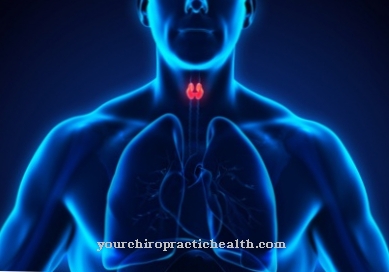With the term Plastic surgery cosmetic surgery is usually thought of first. These interventions are a domain of plastic or Aesthetic surgery. However, plastic surgery is also important Reconstructive surgerywho helps sick people.
What is Plastic Surgery?

Plastic surgery is a branch of surgery. She is engaged in performing shape-changing and restorative surgical interventions. The interventions can affect the skin, organs and other tissue structures.
Mostly it concerns corrections and the elimination of malformations, consequences of injuries, the elimination of visibly disturbed functions of the body and the modulation of body shapes for aesthetic reasons. Plastic surgery includes the areas of breast surgery, plastic corrections and reconstructions after diseases and accidents, aesthetic surgery, hand surgery and burn surgery.
Plastic surgery is not only concerned with surgical interventions that have a medical indication. Surgery is also done because the patient wants changes in their appearance. After accidents or disfiguring diseases, both aspects lead to the use of plastic surgery. It is about the medical necessity with the elimination of defects and functional restrictions and the aesthetic correction of the patient's appearance. Anyone who is allowed to call themselves a “plastic surgeon” has completed appropriate training as a specialist.The term “cosmetic surgeon”, on the other hand, is not a term that comes from continuing medical education.
Treatments & therapies
For medical reasons, shape-changing and restorative interventions can mean a great improvement in health and quality of life for patients. Breast surgery is an important branch of plastic surgery. Breast surgery doesn't just treat women.
This area of plastic surgery also helps men who suffer from abnormal breast enlargement (gynecomastia). One focus of operations for medical reasons is the removal of tumors in the breast. Breast-conserving cancer cannot always be removed by surgery. Therefore, another task of breast surgery is to rebuild the female breast after cancer surgery. Plastic surgery also helps people who have lost a lot of excess weight. After a massive loss of weight, it may be necessary to harmonize the body shape through a surgical procedure.
Another important branch of plastic surgery is hand surgery. Patients who suffer from compression of the nerves in the hand area (carpal tunnel syndrome) experience relief from their symptoms through surgery. The anatomical structure of the hand is very complex. Anyone who intervenes on the hand must have differentiated knowledge of the structures of the hand. With their surgical capabilities, hand surgeons can often remedy the consequences of serious accidents and injuries so well that the patient concerned does not have to live with any restrictions in the function of their hands and fingers.
Plastic surgery is also concerned with the care of patients who have suffered severe burns and scalds. In addition to providing primary care for severely injured burn victims, attempts are made to improve the appearance of the skin and scars with secondary surgical interventions and skin transplants.
Breast operations, the suction of unwanted fat and the correction of body shapes are carried out by the plastic surgeon without any pathological changes. Many healthy people are dissatisfied with their bodies and would like to achieve their individual image of beauty through one or more surgical interventions. This often involves reducing, enlarging or tightening the female breast. The areas of responsibility of the aesthetic surgeon include procedures such as wrinkle treatments, tummy tuck, face lifts, body lifts and liposuction.
Further fields of activity are the tightening of eyelids and the removal of annoying birthmarks and blood sponges. Anyone who is not satisfied with the shape of their ears or nose can have these parts of the body given a new shape through an operation. Aesthetic surgery also removes sweat glands, if desired, to reduce excessive sweating. Another area of responsibility for aesthetic surgeons has grown significantly in recent years: the removal of tattoos.
Diagnosis & examination methods
The patients who have lost their normal appearance and the full ability of bodily functions due to illness or serious injuries are very grateful for the healing and reconstructive possibilities that plastic surgery offers today.
Often, surgery is performed under the microscope to restore the finest structures and nerve connections. Even the operations classified as cosmetic surgical measures at the request of generally healthy patients can bring a significant improvement in their self-esteem and body feeling. But every surgical procedure carries risks. It can lead to wound infections and wound healing disorders. Even with cosmetic surgery, deaths can occur because wounds become infected and sepsis occurs.
Possible blood poisoning and shock are the most common dangerous complications after surgery. It also happens time and again that liposuction accidentally causes serious internal injuries. The risks and side effects of an operation can also include allergic reactions caused by the use of medication and surgical supplies or by inserted implants.
Anyone who decides to have a surgical procedure should make sure that they are treated by an experienced specialist. Each patient has their own, very individual risk potential due to previous illnesses, as a smoker or as a very overweight person. A comprehensive explanation and an accurate assessment of the risks can only be obtained through a discussion with a specialist.

























.jpg)

.jpg)
